new posts in all blogs
Viewing: Blog Posts Tagged with: Candlewick, Most Recent at Top [Help]
Results 26 - 50 of 255
How to use this Page
You are viewing the most recent posts tagged with the words: Candlewick in the JacketFlap blog reader. What is a tag? Think of a tag as a keyword or category label. Tags can both help you find posts on JacketFlap.com as well as provide an easy way for you to "remember" and classify posts for later recall. Try adding a tag yourself by clicking "Add a tag" below a post's header. Scroll down through the list of Recent Posts in the left column and click on a post title that sounds interesting. You can view all posts from a specific blog by clicking the Blog name in the right column, or you can click a 'More Posts from this Blog' link in any individual post.

By:
Betsy Bird,
on 4/13/2016
Blog:
A Fuse #8 Production
(
Login to Add to MyJacketFlap)
JacketFlap tags:
Reviews,
middle grade fiction,
Best Books,
Candlewick,
Kate DiCamillo,
middle grade historical fiction,
middle grade realistic fiction,
Best Books of 2016,
2016 reviews,
Reviews 2016,
2016 middle grade fiction,
2017 Newbery contenders,
2016 middle grade historical fiction,
Add a tag
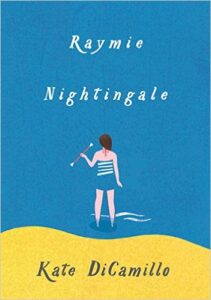 Raymie Nightingale
Raymie Nightingale
By Kate DiCamillo
Candlewick Press
$16.99
ISBN: 978-0-7636-8117-3
Ages 9-12
On shelves now
My relationship to Kate DiCamillo’s books is one built entirely on meaning. Which is to say, the less emotional and meaningful they are, the better I like ‘em. Spaghetti loving horses and girls that live in tree houses? Right up my alley! China rabbits and mice with excessive earlobes? Not my cup of tea. It’s good as a reviewer to know your own shortcomings and I just sort of figured that I’d avoid DiCamillo books when they looked deep and insightful. And when the cover for Raymie Nightingale was released it was easily summarized in one word: Meaningful. A girl, seen from behind, stands ankle-deep in water holding a single baton. Still, I’ve had a good run of luck with DiCamillo as of late and I was willing to push it. I polled my friends who had read the book. The poor souls had to answer the impossible question, “Will I like it?” but they shouldered the burden bravely. Yes, they said. I would like it. I read it. And you know what? I do like it! It is, without a doubt, one of the saddest books I’ve ever read, but I like it a lot. I like the wordplay, the characters, and the setting. I like what the book has to say about friendship and being honest with yourself and others. I like the ending very very much indeed (it has a killer climax that I feel like I should have seen coming, but didn’t). I do think it’s a different kind of DiCamillo book than folks are used to. It’s her style, no bones about it, but coming from a deeper place than her books have in the past. In any case, it’s a keeper. Meaning plus pep.
Maybe it isn’t much of a plan, but don’t tell Raymie that. So far she thinks she has it all figured out. Since her father skipped town with that dental hygienist, things haven’t been right in Raymie’s world. The best thing to do would be to get her father back, so she comes up with what surely must be a sure-fire plan. She’ll just learn how to throw a baton, enter the Little Miss Central Florida Tire competition, win, and when her father sees her picture in the paper he’ll come on home and all will be well. Trouble (or deliverance) comes in the form of Louisiana and Beverly, the two other girls who are taking this class with Ida Nee (the baton-twirling instructor). Unexpectedly, the three girls become friends and set about to solve one another’s problems. Whether it’s retrieving library books from scary nursing home rooms, saving cats, or even lives, these three rancheros have each other’s backs just when they need them most.
DiCamillo has grown as an author over the years. So much so that when she begins Raymie Nightingale she dives right into the story. She’s trusting her child readers to not only stick with what she’s putting down, but to decipher it as well. As a result, some of them are going to experience some confusion right at the tale’s beginning. A strange girl seemingly faints, moaning about betrayal in front of a high-strung baton instructor. Our heroine stands impressed and almost envious. Then we learn about Raymie’s father and the whole enterprise takes a little while to coalesce. It’s a gutsy choice. I suspect that debut authors in general would eschew beginning their books in this way. A pity, since it grabs your attention by an act of simple befuddlement.
Initial befuddlement isn’t enough to keep you going, though. You need a hook to sustain you. And in a book like this, you find that the characters are what stay with you the longest. Raymie in particular. It isn’t just about identification. The kid reading this book is going to impress on Raymie like baby birds impress on sock puppet mamas. She’s like Fone Bone in Jeff Smith’s series. She’s simultaneously a mere outline of a character and a fully fleshed out human being. Still, she’s an avatar for readers. We see things through her rather than with her. And sure, her name is also the title, but names are almost always titles for Kate DiCamillo (exceptions being The Magician’s Elephant, The Tiger Rising, and that Christmas picture book, of course). If you’re anything like me, you’re willing to follow the characters into absurdity and back. When Beverly says of her mother that, “Now she’s just someone who works in the Belknap Tower gift shop selling canned sunshine and rubber alligators” you go with it. You don’t even blink. The setting is almost a character as well. I suspect DiCamillo’s been away from Florida too long. Not in her travels, but in her books. Children’s authors that willingly choose to set their books in the Sunshine State do so for very personal reasons. DiCamillo’s Florida is vastly different from that of Carl Hiaasen’s, for example. It’s a Florida where class exists and is something that permeates everything. Few authors dare to consider lower or lower middle classes, but it’s one of the things I’ve always respected about DiCamillo in general.
Whenever I write a review for a book I play around with the different paragraphs. Should I mention that the book is sad at the beginning of the review or at the end? Where do I put my theory about historical fiction? Should character development be after the plot description paragraph or further in? But when it comes to those written lines I really liked in a book, that kind of stuff shouldn’t have to wait. For example, I adore the lines, “There was something scary about watching an adult sleep. It was as if no one at all were in charge of the world.” DiCamillo excels in the most peculiar of details. One particular favorite was the small paper cups with red riddles on their sides. The Elephantes got them for free because they were misprinted without answers. It’s my secret hope that when DiCamillo does school visits for this book she’ll ask the kids in the audience what the answer to the riddle, “What has three legs, no arms, and reads the paper all day long?” might be. It’s her version of “Why is a raven like a writing desk?”
Now let us discuss a genre: Historical fiction. One question. Why? Not “Why does it exist?” but rather “Why should any novel for kids be historical?” The easy answer is that when you write historical fiction you have built in, legitimate drama. The waters rise during Hurricane Katrina or San Francisco’s on fire. But this idea doesn’t apply to small, quiet novels like Raymie Nightingale. Set in the summer of 1975, there are only the barest of nods to the time period. Sometimes authors do this when the book is semi-autobiographical, as with Jenni Holm’s Sunny Side Up. Since this novel is set in Central Florida and DiCamillo grew up there, there’s a chance that she’s using the setting to draw inspiration for the tale. The third reason authors sometimes set books in the past is that it frees them up from the restrictions of the internet and cell phone (a.k.a. guaranteed plot killers). Yet nothing that happens in Raymie Nightingale requires that cell phones remain a thing of the past. The internet is different. Would that all novels could do away with it. Still, in the end I’m not sure that this book necessarily had to be historical. It’s perfectly fine. A decent time period to exist in. Just not particularly required one way or another.
Obviously the book this feels like at first is Because of Winn-Dixie. Girl from a single parent home finds friendship and (later rather than sooner, in the case of Raymie Nightingale) an incredibly ugly dog. But what surprised me about Raymie was that this really felt more like Winn-Dixie drenched in sadness. Sadness is important to DiCamillo. As an author, she’s best able to draw out her characters and their wants if there’s something lost inside of them that needs to be found. In this case, it’s Raymie’s father, the schmuck who took off with his dental hygienist. Of course all the characters are sad in different ways here. About the time you run across the sinkhole (the saddest of all watery bodies) on page 235 you’re used to it.
Sure, there are parts of the book I could live without. The parts about Raymie’s soul are superfluous. The storyline of Isabelle and the nursing home isn’t really resolved. On the flip side, there are lots of other elements within these pages that strike me as fascinating, like for example why the only men in the book are Raymie’s absent father, an absent swimming coach, a librarian, and a janitor. Now when I was a child I avoided sad children’s books like the plague. You know what won the Newbery in the year that I was born? Bridge to Terabithia. And to this day I eschew them at all costs. But though this book is awash in personal tragedies, it’s not a downer. It’s tightly written and full of droll lines and, yes I admit it. It’s meaningful. But the meaning you cull from this book is going to be different for every single reader. Whip smart and infinitely readable, this is DiCamillo at her best. Time to give it a go, folks.
On shelves now.
Source: Final copy sent from publisher for review.
Song to Listen to With This Book: King of the Road
Alternative Song: I Wanna Hold Your Hand
Like This? Then Try:

Absolutely One Thing. Lauren Child. 2016. Candlewick. 32 pages. [Source: Review copy]
First sentence: I have this little sister, Lola. She is small and very funny. Sometimes for a treat, Mom says, "We are going to the store and you may choose one thing." "One thing EACH," I say, "or ONE thing between two?" And Mom says, "Each."
Premise/plot: Charlie and Lola are brother and sister. Charlie takes great care of his little sister. And he's surprisingly very patient, very kind, very tender with her. Lola is without a doubt a handful! In this new book, Charlie and Lola are going to the store. If they can get ready and out the door. If LOLA can get ready and out the door that is. Nothing goes quite as planned with these two... Which gives the author plenty of opportunity to sneak some math lessons into the story itself.
For example:
It takes me three minutes to brush my teeth, one minute to remember that I have forgotten to eat breakfast, four minutes to eat my puffa pops, three minutes to brush my teeth again and eight minutes to find Lola's left shoe. That makes us nine minutes late.
My thoughts: I love, love, love, LOVE Charlie and Lola. I thought I had made peace with the idea of there being no more new Charlie and Lola books. So I was surprised and thrilled to see a new one being published! This book is FUN and delightful. It is a very strong addition to the series. It isn't just an adaptation of a TV episode, a somewhat weaker imitation of Lauren Child's beloved characters. This book captures the heart and soul of what makes this series great.
Text: 5 out of 5
Illustrations: 5 out of 5
Total: 10 out of 10
© 2016 Becky Laney of
Becky's Book Reviews
A Big Surprise for Little Card. Charise Mericle Harper. Illustrated by Anna Raff. 2016. Candlewick. 40 pages. [Source: Review copy]
First sentence: Little Card lived in a building with all of his card friends. Each card had a special job.
Premise/plot: Each card has a purpose, a unique purpose. Little Card receives a letter in the mail marked "L.C." he begins training as a birthday card. But it seems there was a mix-up. Long Card was meant to receive that training, and he was meant to be a LIBRARY card. How is the library like a birthday? Little Card sees some similarities. Little Card isn't just "a" library card, he is Alex's library card. Readers learn along with Alex and Little Card about the library.
My thoughts: It has a unique premise, in my opinion. I'm not sure I absolutely needed to see a talking library card in order to appreciate the library. But it could always be worse. I do LOVE the library. And I do love books. And this picture book celebrates reading and the library. So there is that!
Text: 3 out of 5
Illustrations: 3 out of 5
Total: 6 out of 10
© 2016 Becky Laney of
Becky's Book Reviews
The House That Zack Built. Alison Murray. 2016. Candlewick Press. 32 pages. [Source: Review copy]
First sentence: This is the house that Zack built. And this is the fly that buzzed on by, over the house that Zack built. This is the cat that stalked the fly that buzzed on by, over the house that Zack built.
Premise/plot: A retelling, of sorts, of The House that Jack Built. Zack, the house-builder, lives on the farm. And animals feature prominently in this retelling.
My thoughts: While I am not a fan of The House That Jack Built, I am very much a fan of The House that Zack Built. Part of the charm, for me, is the CAT. This gray-and-white cat had me at hello. And finding the cat on each page, and seeing the cat's expression was great fun for me. This cat has ATTITUDE, trust me. I liked the text. I did. I thought the rhythm and rhyme of it worked well. But I really enjoyed the illustrations.
Text: 3.5 out of 5
Illustrations: 4.5 out of 5
Total: 8 out of 10
© 2016 Becky Laney of
Becky's Book Reviews
Hour of the Bees. Lindsay Eagar. 2016. Candlewick. 360 pages. [Source: Review copy]
I adored Lindsay Eagar's Hour of the Bees. Sometimes I wish 'reviewing' books was as simple as saying: READ THIS BOOK. TRUST ME. But it's never that simple. Words have to be found somehow to try to do this book justice.
Carol, the heroine, isn't exactly thrilled that she'll be spending the summer with her family on her grandfather's sheep farm in the New Mexico desert. Her father and grandfather have not gotten along, and so this is the first time he'll be meeting his grandchildren: Carol and Lu. (Or as he likes to call them Carolina and Luis. There is also Carol and Lu's half-sister, Alta.) Since they don't get along, why are they going? For the simple reason that he is getting older, and, he has dementia. He "needs" to be at a facility where he can be looked after closely. Living on an isolated drought-plagued farm miles away from any town is not an option anymore. But as you might imagine, he does not want to go; he doesn't want to leave the home he shared with his wife, Rosa. (Rosa died the same day Carol was born.)
Perhaps the first day was a bit of a struggle full of strange, awkward moments where no one was quite comfortable. But relatively soon after their arrival, Carol becomes drawn to her grandpa like a magnet. She especially loves to hear him tell stories. The stories are vivid and magical, and, they almost always start the same way: Once upon a time, there was a tree...
The family works HARD; it is exhausting work in the heat. And whether the drought has been 'a hundred years' like her grandfather claimed, or just a few years, it is HOT and miserable. Yet Carol finds herself having the best summer of her life. How can this be?!
One unusual thing about this summer is that bees seem to follow Carol EVERYWHERE. She is always seeing or hearing bees. Her grandfather, Serge, claims that the bees will bring the rain. That it was in fact the bees who took the lake--each one taking one drop of the lake as they flew off...
The stories Serge tells feel timeless...and that's one reason why Carol can't get enough of them. But can she actually believe in her grandfather's stories? Will you?
© 2016 Becky Laney of
Becky's Book Reviews
By:
Guest Posts,
on 3/10/2016
Blog:
The Children's Book Review
(
Login to Add to MyJacketFlap)
JacketFlap tags:
Ages 4-8,
Sports,
Book Lists,
Yoga,
featured,
Golden Books,
Candlewick,
Mark Teague,
Audrey Wood,
Simon & Schuster Books for Young Readers,
Blue Sky Press,
Judy Schachner,
Puffin Books,
Jon Stone,
Michael Smollin,
Family Favorites,
Kay Thompson,
Best Kids Stories,
Mariam Gates,
Sounds True Books,
Sarah Jane Hinder,
Mart Crowley,
Add a tag
Mariam Gates, author of Good Morning Yoga, selected these five family favorites.
Voice of Freedom Fannie Lou Hamer. Carole Boston Weatherford. Illustrated by Ekua Holmes. 2015. Candlewick. 56 pages. [Source: Library]
Voice of Freedom: Fannie Lou Hamer: The Spirit of the Civil Rights Movement is a book both easy to categorize and difficult. It is nonfiction. It is a biography of Fannie Lou Hamer--a picture book biography. A biography written in verse. So it's poetry too. And it's about the civil rights movement. Yes, the focus is on Fannie Lou Hamer's role in the civil rights movement, but, it isn't as if it's her story alone. It is so much more than that. The fact that it is a picture book biography written in verse about the civil rights movement makes it a great example of a picture book for older readers. (And the fact that it's about the civil rights movement, and, a heroine of the movement, makes it a great example of a diverse title and one highlighting a remarkable woman.) So there are at least half a dozen reasons why one would want to pick this one up and read it.
But could I be forgetting the most important reason to seek this one out to read?! It is a GREAT read. It was fascinating, absorbing, compelling. I've read a dozen or so books--mainly for young readers, I admit--about the civil rights movement, yet I still found myself learning things I hadn't known before. I love to learn as a I read. And it is so beautifully written, the narrative voice is just outstanding. A typical spread includes one poem and an illustration by Ekua Holmes.
Would I recommend it??? YES!
© 2016 Becky Laney of
Becky's Book Reviews
Peppa Pig and the Lucky Ducks. 2016. Candlewick Press. 32 pages. [Source: Review copy]
First sentence: Peppa and George have come to visit the ducks. They see 1 pond, but the ducks aren't home.
Premise/plot: After concluding that the ducks have gone on an adventure, Peppa and George decide to make an adventure of FINDING ducks. Their adventure will have them counting all the way to twenty. Will these two find the missing ducks?
My thoughts: I love, love, love the characters from Peppa Pig. (Peppa, George, Mummy, Daddy, Granny, Grandpa, etc.) This picture book is a concept book--counting, one to twenty--featuring the characters from the TV show. It has a slight story to it: they're on a duck-hunt. But it is primarily a concept book.
Text: 3 out of 5
Illustrations: 3 out of 5
Total: 6 out of 10
© 2016 Becky Laney of
Becky's Book Reviews
The Princess in Black and the Hungry Bunny Horde (#3) Shannon and Dean Hale. Illustrated by LeUyen Pham. 2016. Candlewick. 96 pages. [Source: Review copy]
I am definitely liking the Princess in Black series by Shannon and Dean Hale. I like the third title in the series, The Princess in Black and the Hungry Bunny Horde, even better than the second perhaps. (Though I did like meeting Princess Sneezewort in the second book. I wouldn't mind if she became a series regular!)
The book opens with Princess Magnolia and Frimplepants on their way to have brunch with Princess Sneezewort and her pet, Sir Hogswell. Frimplepants may be even more excited about brunch than Princess Magnolia. But, predictably, the two don't make it in time for brunch. Instead, the monster alarm goes off, and the two dash to the secret cave to emerge The Princess in Black and Blacky. The two arrive thinking to find MONSTERS. But all the Princess can see before her eyes are CUTE, ADORABLE, SWEET, LOVABLE BUNNIES. But Duff the Goat Boy insists that the bunnies ARE monsters. She's not convinced.
Who is right? The Princess in Black or Duff the Goat Boy?! Are the bunnies all they appear to be?! Or could the bunnies prove disastrous?!
I enjoyed this one very much. It definitely reminded me of "The Trouble with Tribbles."
© 2016 Becky Laney of
Becky's Book Reviews
Peppa Pig and the I Love You Game. 2015. Candlewick. 32 pages. [Source: Review copy]
First sentence: "It's Valentine's Day!" says Mummy Pig.
Premise/plot: In celebration of Valentine's Day, Peppa Pig and her family name all of the many, many, many things they love. For example, Daddy Pig loves to make pancakes and George likes dinosaurs, or dine-saw, as the case may be. Peppa may just be the most vocal in the family. She names DOZENS of things that she loves. What will top her list? Can you guess?
My thoughts: I liked it well enough. I don't really think any Valentine's-Day themed book is going to top my best of list. But Peppa Pig is cute, fun, adorable. I love, love, love the TV show. And I'm almost always glad to see new picture books being released starring Peppa and her family. Anyone who enjoys the show will find this one fun, in my opinion. However, if you've never, ever seen the show, then this picture book will probably not quite work for you. Part of the fun is HEARING the characters talk and knowing their stories and backstories.
Text: 3 out of 5
Illustrations: 3 out of 5
Total: 6 out of 10
© 2016 Becky Laney of
Becky's Book Reviews
By:
Bianca Schulze,
on 2/1/2016
Blog:
The Children's Book Review
(
Login to Add to MyJacketFlap)
JacketFlap tags:
Victoria Aveyard,
Viking Books for Young Readers,
Terry Fan,
The Fan Brothers,
HarperCollins,
Ages 0-3,
Ages 4-8,
Ages 9-12,
Book Lists,
Sara Pennypacker,
Kevin Henkes,
featured,
Atheneum Books for Young Readers,
HarperTeen,
Candlewick,
Razorbill,
Roaring Brook Press,
Jarvis,
Judith Viorst,
Knopf Books for Young Readers,
Cale Atkinson,
Doreen Cronin,
Megan McDonald,
David Small,
Dan Gutman,
Douglas Florian,
Simon & Schuster Books for Young Readers,
Julia Donaldson,
Jon Klassen,
Peter Reynolds,
Balzer + Bray,
Greenwillow Books,
Lydia Monks,
Lee White,
Disney-Hyperion,
Ruta Sepetys,
Marissa Meyer,
Laura Dronzek,
G.P. Putnam's Sons Books for Young Readers,
Teens: Young Adults,
Julie Falatko,
Best Books for Kids,
Best Kids Stories,
Jessica Khoury,
Feiwel & Friends,
Jess Keating,
Popular Kids Stories,
Best New Kids Books,
Melissa Landers,
Eric Fan,
Caitlyn Dlouhy Books,
Heidi Heilig,
little bee books,
Rebecca Roher,
Tundra Books,
Tim Miller,
Vikki VanSickle,
Sonia Sanchez,
Steve Light,
Tommy Greenwald,
Add a tag
Our selection of hot new releases and popular kids' books has a lot to offer!

By:
Betsy Bird,
on 1/18/2016
Blog:
A Fuse #8 Production
(
Login to Add to MyJacketFlap)
JacketFlap tags:
Reviews,
Best Books,
Candlewick,
African-American history,
picture book poetry,
Roxane Orgill,
2012 Caldecott contender,
African-American authors and illustrators,
African-American books,
Best Books of 2016,
Reviews 2016,
2016 poetry,
Francis Vallejo,
Add a tag
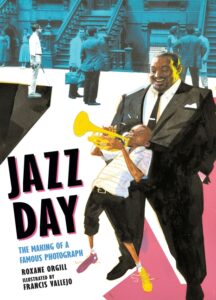 Jazz Day: The Making of a Famous Photograph
Jazz Day: The Making of a Famous Photograph
By Roxane Orgill
Illustrated by Francis Vallejo
Candlewick Press
$18.99
ISBN: 9780763669546
Ages 9-12
On shelves March 8th
Some books for kids have a hard road ahead of them. Here’s a secret. If you want a book to sell just oodles and oodles of copies to the general public, all you have to do is avoid writing in one of two specific genres: poetry and nonfiction. Even the best and brightest nonfiction books have a nasty tendency to fade from public memory too soon, and poetry only ever gets any notice during April a.k.a National Poetry Month. I say that, and yet there are some brave souls out there who will sometimes not just write poetry. Not just write nonfiction. They’ll write nonfiction-inspired poetry. It’s crazy! It’s like they care about the quality of the content more than make a bazillion dollars or something. The latest book to fall into this category is Jazz Day: The Making of a Famous Photograph by Roxane Orgill. Melding topics like jazz musicians and photography with history, poetry, and some truly keen art, this isn’t really like any other book on your shelves. I’m betting that that’s a good thing too.
It was sort of a crazy idea for a graphic designer / jazz buff to come up with. By 1958 jazz was a well-established, deeply American, musical genre. So why not try to get all the jazz greats, and maybe some up-and-comers, into a single photograph all together? The call went out but Art Kane (who really wasn’t a photographer himself) had no idea who would turn up. After all, they were going to take the picture at ten in the morning. That’s a time most jazz performers are fast asleep. Yet almost miraculously they came. Count Basie and Thelonious Monk. Maxine Sullivan and Dizzy Gillespie. Some of them were tired. Some were having a great time catching up with old friends. And after much cajoling on Kane’s part a photo was made. Fifty-seven musicians (fifty-eight if you count Willie “Lion” Smith just out of frame). Orgill tells the tale in poetry, with artist Francis Vallejo providing the art and life. Extensive backmatter consists of an Author’s Note, Biographies, a page on the photo and homages to it, Source Notes, and a Bibliography that includes Books, Articles, Audiovisual Material, and Websites.
Jazz is often compared to poetry. So giving this book too rigid a structure wouldn’t offer the right feel at all. I’m no poet. I wish I had a better appreciation for the art than I do. Yet even with my limited understanding of the style I found myself stopping when I read the poem “This Moment” written from the point of view of Eddie Locke, a drummer. It’s the kind of poem where it’s composed as a series of quatrains. The second and fourth lines of each stanza are repeated as the first and third lines of the next. It was fortunate for me that Orgill mentions in the back of the book that the poem is a pantoum. I’d never have come up with that term myself (I thought it was a sestina). Most of the poetry in the book isn’t really that formal. In fact, Orgill confesses that, “I write prose, not poetry. But this story demanded a sense of freedom, an intensity, and a conciseness that prose could not provide.” The result is that most of the poems are free verse, which I much preferred.
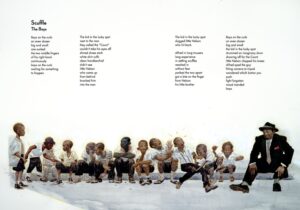 Did you know that when publishing a book for kids you’re not supposed to turn in your manuscript with an illustrator already attached? True fact. Editors like having the power to pair authors and artists together. To be honest, they have experience in this area and sometimes their intervention is sublime (sometimes it fails miserably too, but that’s a tale for another day). I’m afraid I don’t know what Candlewick editor saw Orgill’s manuscript and thought of Francis Vallejo as a potential illustrator. If I knew I’d kiss them. Detroit born Vallejo is making his debut with this book and you’d never know in a million years that he wasn’t a born and bred Harlemite. His style is perfect for this tale. As adept at comic style panels as he is acrylic and pastel jazz scenes, there’s life in this man’s art. It was born to accompany jazz. It’s also particularly interesting watching what he does with light. The very beginning of the book shows a sunrise coming up on a hot August day. As it rises, shadows make way. This play between light and shadow, between the heat of the photo shoot and the cool jazz clubs that occasionally make an appearance in the text, gives the book its heart. It’s playful and serious all at once so that when you lift the page that reveals the real photograph, that action produces a very real moment of awe.
Did you know that when publishing a book for kids you’re not supposed to turn in your manuscript with an illustrator already attached? True fact. Editors like having the power to pair authors and artists together. To be honest, they have experience in this area and sometimes their intervention is sublime (sometimes it fails miserably too, but that’s a tale for another day). I’m afraid I don’t know what Candlewick editor saw Orgill’s manuscript and thought of Francis Vallejo as a potential illustrator. If I knew I’d kiss them. Detroit born Vallejo is making his debut with this book and you’d never know in a million years that he wasn’t a born and bred Harlemite. His style is perfect for this tale. As adept at comic style panels as he is acrylic and pastel jazz scenes, there’s life in this man’s art. It was born to accompany jazz. It’s also particularly interesting watching what he does with light. The very beginning of the book shows a sunrise coming up on a hot August day. As it rises, shadows make way. This play between light and shadow, between the heat of the photo shoot and the cool jazz clubs that occasionally make an appearance in the text, gives the book its heart. It’s playful and serious all at once so that when you lift the page that reveals the real photograph, that action produces a very real moment of awe.
There’s been a lot of talk in the world of children’s literature lately about the research done on both works of fiction and nonfiction. Anytime you set your book in the past you have a responsibility to get the facts right. Part of what I love so much about Jazz Day is the extent of the research here. Orgill could easily have found a couple articles and books about the day of the photograph and stopped there. Instead, she writes that “Kane was by all accounts a wonderful storyteller, but one who did not always adhere to the facts. With the help of his son Jonathan Kane, I tried to set the story of the photograph straight.” Instructors who are teaching about primary sources in the schools could use this anecdote to show how reaching out to primary sources is something you need to do all the time. The rest of the backmatter (and it really is some of the most extensive I’ve ever seen) would be well worth showing to kids as well.
The question then becomes, whom is this book for? The complexity of the subject matter suggests that it’s meant for older kids. Those kids that might have a sense of some of the history (they might have heard what jazz is or who Duke Ellington was at some point in their travels). But would they read it for pleasure or as a kind of assigned reading? I don’t know. I certainly found it amusing enough, but I’m a 37-year-old woman. Not the target age range exactly. Yet I want to believe that there’s a fair amount of kid-friendly material here. Poems like “So Glad” and “quartet” may be about adults talking from an adult perspective, but Orgill cleverly livens the book up with the perspective of kids every step of the way. From the children sitting bored on the curb to a girl peering down from her window wishing the jazz men and photographer would just go away, kids get to give their two cents constantly. Read it more than once and you’ll begin to recognize some of them. Brothers Alfred and Nelson crop up more than a couple times too. Their mischief is just what the doctor ordered. With that in mind, it might be a good idea to have kids read different poems at different times. Save the more esoteric ones for later.
Jazz is hard to teach to kids. They know it’s important but it’s hard to make it human. There are always exceptions, though. For example, my 20-month-old is so obsessed with the book This Jazz Man by Karen Ehrhardt that he’ll have me read it to him a hundred times over. To my mind, that’s what this book is capable of, if at a much older level. It humanizes the players and can serve as a starting point for discussions, teaching units, you name it. These men and women are hot and tired and laughing and alive, if only at this moment in time. It’s a snapshot in both the literal and figurative sense. It’ll take some work to get it into the right hands, I suspect, but in the end it’s worth it. Jazz isn’t some weird otherworldly language. It’s people. These people. Now the kids in the book, and the kids reading this book, have a chance to get to know them.
On shelves March 8th.
Source: Galley sent from publisher for review.
Like This? Then Try:
Professional Reviews:

.jpg?picon=107)
By:
Lizzy Burns,
on 12/28/2015
Blog:
A Chair, A Fireplace and A Tea Cozy
(
Login to Add to MyJacketFlap)
JacketFlap tags:
reviews,
young adult,
historical fiction,
candlewick,
Kekla Magoon,
Malcolm X,
2015,
Ilyasah Shabazz,
Add a tag
X: A Novel by Ilyasah Shabazz and Kekla Magoon. Candlewick Press. 2015. Reviewed from ARC.
by Ilyasah Shabazz and Kekla Magoon. Candlewick Press. 2015. Reviewed from ARC.
 The Plot: The boyhood and teen years of Malcolm Little, who would become Malcolm X. Malcolm's family was both close and fractured: his father died when he was young. His mother, left with a large family and little support, was committed. Malcolm went into foster homes and then later moved in with a family member in Boston.
The Plot: The boyhood and teen years of Malcolm Little, who would become Malcolm X. Malcolm's family was both close and fractured: his father died when he was young. His mother, left with a large family and little support, was committed. Malcolm went into foster homes and then later moved in with a family member in Boston.
In Boston, as a teen, he saw more appeal in the nightlife of the city than in the respectable choices his half-sister has made. One bad choice leads to another, but to Malcolm, they're never the bad choices. They are his choices.
And as the reader who knows a bit about Malcolm, who knows that it's in prison for theft that an adult Malcolm converts to Islam, it's about seeing how Malcolm becomes that man.
The Good: I'm that reader who knows "a bit" about Malcolm X, which meant that I vaguely knew the bare bones of his story, particularly his life as a child and a teen.
X: A Novel did so many wonderful things, starting with showing why crime appealed to the young Malcolm. (Book talking tip: instead of selling this as a work of historical fiction, talk up the the aspect of why crime can be appealing.)
Actually as I give that tip, I have to add, that is too simplistic -- it's not as if there was a simple, easy choice. It's that Malcolm had been told that as a young black man his choices were limited when it came to education and career, and on the street, hustling or stealing, his choices were not limited. It's that Malcolm had had a close family and then it split apart (in part because the social services at the time were not committed to really helping a family, and in part because Malcolm's mother had a struggle to find work). It's that, well, you could see the immediate results of that life, the fun, the clothes, the parties, that you didn't see in a classroom. It's all tied together.
Or, better, let me share Malcolm's words: "When I first set foot in Harlem, I was a step ahead of everything. I could blend in with the jive cats, swirl the Lindy ladies. let my feet groove, think of nothing but the now. I could close my eyes and in closing them not be seen. Slip into the seams of the streets and let them swallow me. It was a glorious fit, so seemingly warm."
It takes a while for Malcolm to realize that it is not warm, it is seemingly warm. A long time. The book ends with Malcolm embracing Islam and starting to realize where best to direct his energy, his time, his talent.
X: A Novel comes with a great deal of back matter, including an author's note by Shabazz, one of Malcolm X's daughters; information about the characters in the book; a time line of events; and a historical context to the 1920s, 1930s, and 1940s.
Amazon Affiliate. If you click from here to Amazon and buy something, I receive a percentage of the purchase price.
© Elizabeth Burns of A Chair, A Fireplace & A Tea Cozy



By:
Betsy Bird,
on 12/15/2015
Blog:
A Fuse #8 Production
(
Login to Add to MyJacketFlap)
JacketFlap tags:
Best Books of 2015,
Reviews 2015,
2015 poetry,
2015 nursery rhymes,
Reviews,
poetry,
Best Books,
Candlewick,
Chris Riddell,
nursery rhymes,
Michael Rosen,
Add a tag
 A Great Big Cuddle: Poems for the Very Young
A Great Big Cuddle: Poems for the Very Young
By Michael Rosen
Illustrated by Chris Riddell
Candlewick Press
$19.99
ISBN: 978076368116
Ages 0-4
On shelves now.
Did you know that, generally speaking, Europeans have absolutely no interest in the works of Dr. Seuss? It’s true. For years his works have been untranslatable (though great inroads have been made thanks to some recent Spanish editions) and those that remain in the original English have done very poorly in the United Kingdom. Americans by and large tend to be baffled by this. We look at the British lists of Best Picture Books and the like and find them Seuss-free zones. Abandon Seuss, all ye who enter here. I once asked an overseas friend if she’d ever heard of The Lorax. What she’d heard of was the abominable Danny DeVito movie. It doesn’t bear thinking about. Here in the States we rely heavily on Seuss because he was such a genius when it came to writing rhyming verse for the very youngest of readers. Now I hold in my hands a big, beautiful, thick collection of poetry for the very smallest of fry and I have to face an uncomfortable notion. If indeed the English are capable of producing books this good for kids this young, perhaps they don’t need any Seuss. With Rosen and Riddell pairing in this way, they seem perfectly capable of making remarkable, rhythmic, ridiculously catchy titles of their very own.
Thirty-five poems greet you. Thirty-five varying in complexity and content. Just to set the tone, the first rhyme is “Tippy-Tappy” and it contains such a catchy rhythm and happy beat that kids will be bouncing in tandem by the time it is done. Next is “The Button Bop”, limited in word count, high on bops. Accompanied by the vibrant watercolors of artist Chris Riddell, each poem aims to set itself apart from the pack. Some are short, and some slightly longer. Some are anxious or scared while others beat their chests and roar their loudest. It feels like there’s something for everyone in this collection, but the takeaway is how well it holds together. A treasure in a treasury.
Michael Rosen isn’t a household name in United States, but I’d say at least one of his books is. Anyone who has ever sought out or read We’re Going on a Bear Hunt, illustrated by Helen Oxenbury has read his words. We’re just nuts about that book, and we have him to thank for it. Despite that, he’s not an author to relegate himself to just one kind of story. Indeed, I haven’t seen him produce much of anything quite as young as “Bear Hunt” in years (or, at the very least, I haven’t seen works of his brought to U.S. shores this “young” in content). That’s why this book is such a surprise and a delight.
If you have a small child, you grow accustomed to the classic nursery rhymes. They have, after all, withstood the test of time. Still, roundabout the one hundred and fortieth time you’ve read “Bye, Baby Bunting” you long for something a little different. Imagine then the palpable sense of relief such a parent might feel when reading jaunty little poems like “What a Fandango!” starring (what else?) a mango. The thing about Rosen is that so many of his poems feel as if they’ve been in the canon of nursery rhymery for centuries. “Oh Dear” is very much in the same vein as “Hush, Little Baby” all thanks to its regular rhythm and repetition. “Party Time” counts down and brings to mind “This Old Man” in reverse. And should you be under the misbegotten understanding that writing poems of this sort is easy, go on. Write one yourself. Now fill a book with them. I’ll just wait right here and finish my sandwich.
 It is also worth noting that without including any verbal instructions, even the dullest of parental readers will catch on pretty early that many of these poems are interactive. Consider “Finger Story” where your fingers are instructed to do everything from “wake up” and “stretch” to “climb” and “slide”. And just in case they’re still not getting it, Chris Riddell’s art is on hand, showing a pudgy youngster and an orangutan of uncommon sweetness walking their fingers together on the ground.
It is also worth noting that without including any verbal instructions, even the dullest of parental readers will catch on pretty early that many of these poems are interactive. Consider “Finger Story” where your fingers are instructed to do everything from “wake up” and “stretch” to “climb” and “slide”. And just in case they’re still not getting it, Chris Riddell’s art is on hand, showing a pudgy youngster and an orangutan of uncommon sweetness walking their fingers together on the ground.
What is interesting to me here is that in terms of age of the reader, Rosen isn’t limiting himself solely to toddlers. There are a couple poems in here that preschoolers would probably appreciate more than their drooling, babbling brethren. “I Am Hungry”, for example, stars a hungry bear listing everything he could eat at this moment (both the usual fare and unusual selections like “A funny joke” or “The sound of yes”) ending with “Then I’ll eat me” which is just the right level of ridiculousness to amuse the canny four-year-old. And “Don’t Squash” is going to ramp up the silly levels pretty effectively when a splatter happy elephant is instructed not to squash her toes, nose, a bun, the sun, cars, stars, a fly, or the very sky.
Now just the slightest glance of a gander at the back bookflap of this book and you’ll get an eyeful of the sheer talent Rosen has been paired with over the years. His words have been brought to life by folks no less eminent than Helen Oxenbury, Quentin Blake, Bob Graham, and more. Truth be told, I don’t really know if this is his first book with Chris Riddell or not. I will say, though, that when I saw that Riddell was the artist on this title I was surprised. When last seen in the States, Riddell had illustrated that nobly intentioned but ultimately awful Russell Brand Pied Piper of Hamlin. Nothing against Riddell, of course, he did what he could with the material (Clockwork Orange Piper and all). So usually when I see his work I associate it with children’s books a bit more on the hardcore side of the equation. Neil Gaiman and Paul Stewart and the like. Could he do adorable? Could he dial back the disgusting? Yes, yes, and (for good measure) yes again. He has that thing we like to call in the business “talent”. Seems to suit him, it does.
Riddell also seems capable of occasionally re-interpreting Rosen’s rhymes with a particularly child-centric view. The poem “Are You Listening?” felt wildly familiar to me, for example. On the left-hand page sits a guilty dinosaur, slurping a piece of spaghetti, looking mildly nervous. On the right-hand page a toddler is berating a small dinosaur stuffed animal, and it will be very easy indeed for kids looking at the picture to extrapolate the relationship between the realistic dino on the left-hand page, and the one on the right. Sometimes I even got the impression that he was softening the content a tad. The poem “Winter” is one of splinters and blisters, but thanks to the gentle hand of Riddell it turns into a snuggly bear hug with mom. All this and he makes the book multicultural as well. Manifique.
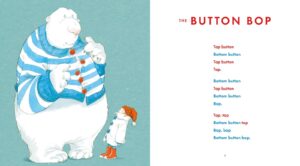 Is it very British? With an author from London and an artist from Brighton it runs the risk of indulging in a bit of English chicanery. There wasn’t much that struck me as containing a particular sense of humor, though, with the possible exception of the poem “Once”. A thoroughly silly but darker little work, it will probably remind Yankee readers more of Shel Silverstein than the aforementioned Seuss. There is also “Lost”, the story of a small mouse all alone, without any particular happy resolution in sight. Had such a poem appeared in a collection for small children originally in the States, I don’t think it’s ridiculous to think that an American editor would have gently nudged the author away from ending the poem with the somewhat dire, “I don’t know, I don’t know, anything at all. / I’m going to sit still now and just look at the wall.”
Is it very British? With an author from London and an artist from Brighton it runs the risk of indulging in a bit of English chicanery. There wasn’t much that struck me as containing a particular sense of humor, though, with the possible exception of the poem “Once”. A thoroughly silly but darker little work, it will probably remind Yankee readers more of Shel Silverstein than the aforementioned Seuss. There is also “Lost”, the story of a small mouse all alone, without any particular happy resolution in sight. Had such a poem appeared in a collection for small children originally in the States, I don’t think it’s ridiculous to think that an American editor would have gently nudged the author away from ending the poem with the somewhat dire, “I don’t know, I don’t know, anything at all. / I’m going to sit still now and just look at the wall.”
The least respected form of children’s literature in existence is poetry. It hasn’t any American Library Association awards it can win. It typically is remembered by teachers in April and then never thought of again. But nursery rhymes fare a bit better. Not every parent remembers to read them to their children, but a fair number try. Getting those same parents to read original works of poetry to their little kids can be trickier, so it helps if you package your book as a big, beautiful, lush and gorgeous gift book. Delightful to read aloud again and again (a good thing since I’m afraid you will have to, if only to please your rabid pint-sized audience) and lovely to the eye, Rosen and Riddell aim for the earliest of ages and end up creating a contemporary classic in the process. It may not be Seuss but you won’t miss him while you read it. A necessary purchase for any new parent. A required selection for libraries and bookstores everywhere. Or, as the book puts it, “Tippy-tappy / Tippy-tappy / Tap, tap, tap.”
On shelves now.
Source: Final copy sent from publisher for review.
Like This? Then Try:
Interviews: Chris and Michael speak on the radio about the book. Many fine sketches are to be seen as well.
Videos:
The man himself. Repeatedly.

.jpg?picon=107)
By:
Lizzy Burns,
on 12/2/2015
Blog:
A Chair, A Fireplace and A Tea Cozy
(
Login to Add to MyJacketFlap)
JacketFlap tags:
reviews,
realistic,
short stories,
contemporary,
candlewick,
jo knowles,
2015,
favorite books of 2015,
Add a tag
Read Between the Lines by Jo Knowles. Candlewick Press. 2015. Reviewed from ARC.
by Jo Knowles. Candlewick Press. 2015. Reviewed from ARC.
 The Plot: Ten chapters takes us to one day in the life of a high school, told through voices of past and present students and one teacher.
The Plot: Ten chapters takes us to one day in the life of a high school, told through voices of past and present students and one teacher.
In each, a raised middle finger is part of the story. It gives power to the person giving someone the finger; it hurts the person who it's aimed at.
And in each, we see how a person looks at others and judges them; or how they look at themselves.
OK for those who want more of a plot: a group of boys think it's smart and clever to fake car accidents to get people to give them cash instead of calling the police -- until it backfires.
The Good; I love this type of book! I love that each chapter is told by someone different, and it's their own story, and that the thread connecting them is sometimes obvious and strong, and other times takes a bit to figure out.
And I love that there are ten chapters; one for each finger.
I love that a bullied boy becomes empowered by his broken finger that means he is constantly giving the finger; but before we embrace the idea that hey, it's not so bad, a girl is disturbed and upset when an angry man gives her the finger. The finger means rage, anger, hatred, rebellion. It's like a word: context matters.
I love that sometimes someone is viewed as a bully and then it turns out they have their own inner demons or frustrations that others don't see. If there were a moral to this story, it's that everyone is fighting their own internal battles, and be a bit less quick to judge.
Also, if your teenage son has a lot of spending money and his old car keeps getting dinged and battered, you may want to ask a few questions.
A Favorite Book for 2015.
Amazon Affiliate. If you click from here to Amazon and buy something, I receive a percentage of the purchase price.
© Elizabeth Burns of A Chair, A Fireplace & A Tea Cozy


By:
Bianca Schulze,
on 12/1/2015
Blog:
The Children's Book Review
(
Login to Add to MyJacketFlap)
JacketFlap tags:
Trudy Ludwig,
Tanya Simon,
Melanie Crowder,
Lesléa Newman,
Holiday Gift Guide Kids Books,
Harry N. Abrams Books,
Richard Simon,
White Cloud Press,
Becky Albertalli,
Laura Amy Schlitz,
Chanukah,
Jewish Books,
featured,
Monica Brown,
Roaring Brook Press,
Hanukkah,
Little Brown Books for Young Readers,
Mark Siegel,
Philomel Books,
Craig Orback,
Susan Gal,
Ages 4-8,
Ages 9-12,
Book Lists,
Gift Books,
Candlewick,
Balzer + Bray,
Barry Deutsch,
Seasonal: Holiday Books,
Amy June Bates,
Teens: Young Adults,
Cultural Wisdom,
Best Kids Stories,
Add a tag
This list of “9 Excellent Jewish Kids Books for Hanukkah Gifts and Beyond” was curated by Bianca Schulze.
Board Book: Jingle Bells. James Lord Pierpont. Illustrated by Pauline Siewert. 2015. Candlewick. 14 pages. [Source: Review copy]
First sentence: Jingle bells! Jingle bells! Jingle all the way! Oh, what fun it is to ride in a one-horse open sleigh.
Premise/plot: A board book adaptation of the familiar holiday song "Jingle Bells." The illustrations feature a family of bears going on a sleigh ride. Little ones can press the button and hear the song.
My thoughts: I enjoyed it. This family of bears is going on a sleigh ride. But on their sleigh ride they are joined by other animals: some squirrels, some badgers, some bunnies, a fox, an owl, etc. (The owl isn't the only bird making its way through the woods.) I loved the last illustration of all the animals gathered around a Christmas tree singing together as Santa in his sleigh passes by overhead.
© 2015 Becky Laney of
Becky's Book Reviews
Happy Perfect Picture Book Friday, Everyone!!!
Even as you read this, I shall be driving to the Green Mountains, accompanied on my journey up my my trusty Audible version of A Storm Of Swords (Book 3 in A Song of Ice and Fire - you know, Game of Thrones :)), and accompanied on my journey back by child #5! :) And by the time we get home, child #3 will be there too! I love the holidays and having the kids home! I can't wait!!! :) I have baked Heath Bar brownies in preparation...which I sampled...and they are GOOD! :)
So although I shall be nowhere near my computer today, I will be with you in spirit for PPBF. I hope you'll enjoy this entertaining Thanksgiving offering!
Title: The Great Thanksgiving Escape
Written & Illustrated By: Mark Fearing
Candlewick, September 2014, Fiction
Suitable For Ages: 4-8
Themes/Topics: family, holidays (Thanksgiving), humor
Opening: "I
t was another Thanksgiving at Grandma's."You can play in here with the rest of the kids," Gavin's mother told him. "We'll call you when the turkey's ready.""Have fun!" Gavin's dad called. But Gavin knew it was not going to be fun. Not fun at all."
Brief Synopsis: While waiting for the Thanksgiving turkey, Gavin is supposed to play with his cousins. But most of them are drooling, stinky babies. No fun! He and his cousin Rhonda plan their escape to the swing set in the back yard, but it's not easy to navigate the perils of a family get-together!
Links To Resources:
Turkey Songs, Poems, and Finger Plays;
Turkey Coloring Pages; play Duck, Duck, Turkey :)
Why I Like This Book: Anyone who has ever been to a family get-together knows about the football-watching uncles gathered around the TV, the cheek-pinching aunts just lying in wait, and the annoying little cousins who demand attention and entertainment :) This story is drolly told from the point of view of the kids who realize that "sometimes you have to make your own fun."
For the complete list of books with resources, please visit
Perfect Picture Books.
PPBF bloggers please be sure to leave your post-specific link in the list below so we can all come visit you!
Have a wonderful, happy weekend, everyone!!! :)

By:
Betsy Bird,
on 11/19/2015
Blog:
A Fuse #8 Production
(
Login to Add to MyJacketFlap)
JacketFlap tags:
Reviews,
nonfiction,
nonfiction picture books,
Claire Saxby,
Best Books,
Candlewick,
Graham Byrne,
Best Books of 2015,
Reviews 2015,
2015 reviews,
2015 nonfiction,
2015 nonfiction picture books,
Add a tag
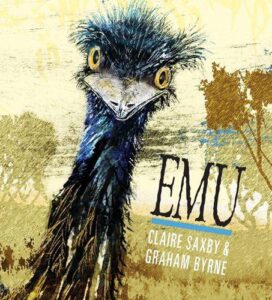 Emu
Emu
By Claire Saxby
Illustrated by Graham Byrne
Candlewick Press
$16.99
ISBN: 978-0-7636-7479-3
Ages 4-7
On shelves now.
Alas for poor emu. Forever relegated to be consider a second rate ostrich, it encompasses all of the awkwardness and none of the stereotypes. Does anyone ever talk about burying your head in the sand like an emu? They do not. Are schoolchildren routinely called upon to ooh and aah at the size of an emu’s egg? They aren’t. And when you watch Swiss Family Robinson, do you ever find yourself wishing that the kids would try to saddle an emu for the big race? Not even once. Emus are the second largest living bird in terms of height, coming right after the ostrich, and you might be fooled into believing that they are the less interesting of the two. There, you are wrong. Wrongdy wrongdy wrong wrong wrong. I do not wish to start a war of words with the prominent ostrich societies of the world, but after reading Emu by Claire Saxby (illustrated by Graham Byrne) I’m a bit of what you might consider an emu convert. Chock full of interesting information and facts about what a typical emu might experience in its day-to-day life, the book is full of thrills, chills, and a species that gives stay-at-home dads everywhere a true animal mascot.
Meet the emu. Do not be offended if he fails to rise when you approach. At the moment he is safeguarding a precious clutch of eggs from elements and predators. While many of us consider the job of hatching eggs to be something that falls to the female of the species, emus are different. Once they’ve laid their eggs, female emus just take off, and it is the male emu that hatches and rears them. In this particular example, the male emu has a brood of seven or so chicks but though they’re pretty big (ten times bigger than a domestic chicken hatchling) they need their dad for food, shelter, and protection. The chicks find their own food right from the start and within three to four months they’ve already lost their first feathers. They zigzag to escape predators, live with their fathers for about a year, and have a kick like you would not believe. Backmatter of the book provides more information about emus, as well as an index.
 This is not what you might call Saxby and Byrne’s first rodeo show. The Aussie duo previously had paired together on the book Big Red Kangaroo, a book that did just fine for itself. Following a kangaroo called “Red”, the ostensibly nonfiction title was best described by PW as, “An understated but visually arresting portrait of a species.” For my part I had no real objections to the book, but neither did I have anything for it. Kangaroo books are not rare in my children’s rooms, though the book was different in that it was written for a younger reading level. That same reading level is the focus of Emu and here I feel that Saxby and Byrne have started to refine their technique. One of the problems I had with Red was this naming of the titular kangaroo. It felt false in a way. Like the author didn’t trust the readers enough to show them a typical day in the life of an animal without having to personalize it with faux monikers. Byrne’s art too felt flatter to me in that book than it does here. This may have more to do with the subject matter than anything else, though. Emu faces, after all, are inherently more amusing and interesting than kangaroos
This is not what you might call Saxby and Byrne’s first rodeo show. The Aussie duo previously had paired together on the book Big Red Kangaroo, a book that did just fine for itself. Following a kangaroo called “Red”, the ostensibly nonfiction title was best described by PW as, “An understated but visually arresting portrait of a species.” For my part I had no real objections to the book, but neither did I have anything for it. Kangaroo books are not rare in my children’s rooms, though the book was different in that it was written for a younger reading level. That same reading level is the focus of Emu and here I feel that Saxby and Byrne have started to refine their technique. One of the problems I had with Red was this naming of the titular kangaroo. It felt false in a way. Like the author didn’t trust the readers enough to show them a typical day in the life of an animal without having to personalize it with faux monikers. Byrne’s art too felt flatter to me in that book than it does here. This may have more to do with the subject matter than anything else, though. Emu faces, after all, are inherently more amusing and interesting than kangaroos
In terms of the text, Saxby utilizes a technique that’s proven very popular with teachers as of late. When kids in classrooms are given open reading time there can sometimes be a real range in reading levels. With this in mind, sometimes nonfiction picture books about the natural world will contain two types of text. There will be the more enticing narrative, ideal for reading aloud to a group or one-on-one. Then, for those budding naturalists, there will be a complementary second section that contains the facts. On the first two pages of Emu, for example, one side introduces the open forest with its “honey-pale sunshine” and the emu’s job while the second block of text, written in a small font that brings to mind an expert’s crisp clean handwriting, gives the statistics about emu (whether or not they can fly, their weight, height, etc.). In the back of the book under the Index there’s actually a little note about these sections. It says, “Don’t forget to look at both kinds of words”, and then writes the words “this kind and this kind” in the two different fonts.
 Artist Graham Byrne’s bio says that he’s an electrical engineer, builder, and artist. This is his second picture book and the art is rendered digitally. What it looks like is scratchboard art, with maybe an ink overlay as well. I enjoyed the sense of place and the landscapes but what really made me happy was how Byrne draws an emu. There’s something about that bright yellow eye in the otherwise impassive face that gets me. I say impassive, but there are times when one wonders if Byrne is fighting an instinct to give his emu some expression. There’s a scene of the emu nosing his eggs, his beak appears to be curling up in just the slightest of smiles. Later an eagle threatens his brood and there’s almost a hint of a frown as he runs over to the rescue. It’s not enough to take you out of the story, but such images bear watching.
Artist Graham Byrne’s bio says that he’s an electrical engineer, builder, and artist. This is his second picture book and the art is rendered digitally. What it looks like is scratchboard art, with maybe an ink overlay as well. I enjoyed the sense of place and the landscapes but what really made me happy was how Byrne draws an emu. There’s something about that bright yellow eye in the otherwise impassive face that gets me. I say impassive, but there are times when one wonders if Byrne is fighting an instinct to give his emu some expression. There’s a scene of the emu nosing his eggs, his beak appears to be curling up in just the slightest of smiles. Later an eagle threatens his brood and there’s almost a hint of a frown as he runs over to the rescue. It’s not enough to take you out of the story, but such images bear watching.
In comparing the emu to the ostrich I may have omitted certain pertinent details. After all, the emu doesn’t have it quite so bad. It appears on the Australian coat of arms, as well as on their money. There was an Emu War of 1932 where the emus actually won the day. Heck, it’s even not too difficult to find emus on farms in the United States. Still, culturally they’ve a far ways to go if ever they are to catch up with their ostrichy brethren fame-wise. Books like this one will help. I think there must be plenty of teachers out there a little tired of using Eric Carle’s Mister Seahorse as their de facto responsible-dads-in-the-wild motif. Now kids outside of Australia will get a glimpse of this wild, wacky, wonderful and weird creature. Consider it worth meeting.
On shelves now.
Source: Final copy sent from publisher for review.
Like This? Then Try:

MARTians. Blythe Woolston. 2015. Candlewick. 224 pages. [Source: Review copy]
Did I enjoy reading Blythe Woolston's MARTians? Yes, for the most part. Not wholeheartedly perhaps. But I can see some definite strengths, which is a reason to recommend it, in my opinion!
MARTians is a YA novel that will appeal to lovers of dystopian novels mainly. Also to those perhaps who really enjoyed Ray Bradbury's science fiction. Though don't expect MARTians to be as amazingly wonderful and as complex as Bradbury's fiction. I definitely got the feeling that the author was inspired by several of Bradbury's stories. And since I love Bradbury too, I felt at times a kindred spirit with the author.
The heroine of MARTians is a young teen girl named Zoe Zindleman. The novel practically throws you right into the action, for better or worse. On the day the novel opens, Zoe learns that she--and her whole class, the whole school, I believe--is being graduated early, several years early in fact. She is curious as to why. But is trying to adapt as best she can. She knows that in a day or two, she'll hopefully be offered a job, start training, and go to work. She's not sure what job she'll be offered--though she knows she'll have a choice between two jobs, a rare treat in this futuristic society. But that's not the only change in her life--school to full-time job. No, her mom received news as well. And as a result, essentially abandons Zoe, trusting that Zoe is now old enough to be on her own. Zoe, for a few days at least, will be all on her own in a house that won't sell, in a neighborhood that's been abandoned--none of the houses will sell--and trashed. She feels very much alone. Until she meets someone who offers to help her so long as she agrees to always lend a helping hand to others. She agrees, and her new life begins...for better or worse.
Much world-building is done in MARTians, but, still enough is left mysterious and shadowy. Readers definitely get the impression that this society is not all-happy despite the focus on materialism and shopping.
I definitely found this a compelling read, and, a quick read.
© 2015 Becky Laney of
Becky's Book Reviews
Happy Perfect Picture Book Friday, Everyone!
You'll all be thrilled to know that my stove has been successfully installed!
(I know you were waiting with bated breath to find out :))
I may have to bake some cookies to see whether the oven works... who can tell? :)
You will also be thrilled to know that in spite of days of heavy rain everyone on Blueberry Hill is still above the water level... albeit in our canoe :)
Today, for PPBF, I have SUCH a fun book to share with you. It was love at first read for me. This book surprised me and made me laugh out loud - a real winner! - and I hope you'll enjoy it as much as I do!
Title: Ragweed's Farm Dog Handbook (Learn From The Best!)
Written & Illustrated By: Anne Vittur Kennedy
Candlewick, August 2015, Fiction
Suitable For Ages: 3-7
Themes/Topics: Humor, animals (farm)
Opening: "
I'm Ragweed. I'm a farm dog, and I'm really, really good at it. Most dogs aren't. But don't worry. You'll be great. You have the handbook."
Brief Synopsis: Ragweed sets out to tell you everything you need to know about being a farm dog... mostly, everything that ISN'T your job :)
Links To Resources: individually or as a group (in classroom or homeschool) make up your own handbook/story about how to be/do something, for example, Bossie's Milk Cow Handbook about how to be a milk cow, or Archie's Wind Up Handbook about how to pitch in baseball.
Why I Like This Book: It's cute and funny! Ragweed is so lovable, and so believable as a character. He's a dog, but his behavior is very reminiscent of a preschooler's :) His handbook focuses on all the things you should NOT do to be the farm dog, and only at the very end does he reveal what the farm dog's job actually is. But I'm not telling. You'll have to read it to find out :) The illustrations are delightful and perfect for the story, bright and engaging. Ragweed is so expressive! I dare you not to love this one. It made me laugh out loud!
For the complete list of books with resources, please visit
Perfect Picture Books.
PPBF bloggers please be sure to leave your post-specific link in the list below so we can all come visit you!
And now, before you all toddle off to your weekends, I want to give you a heads up that I will be posting something interesting on Monday (even though I don't post most Mondays these days) so be sure to check in... I don't think you'll want to miss it! :)
Have a wonderful weekend, everyone!!!
Too Many Toys! Heidi Deedman. 2015. Candlewick. 32 pages. [Source: Review copy]
First sentence:
When Lulu was a baby, she was given a very special one-and-only toy-- a lovely fluffy teddy bear. Lulu named him Jupiter, and she loved him very, very much.Premise/plot: Lulu, our heroine, has way too many toys by the time she's five. (The book mentions how many toys come on birthdays and at Christmas.) She know she can't play with them all, or, love them all. So what does Lulu decide to do with her many, many toys?!
My thoughts: I liked this one. I did. I actually liked it very much. I loved the text.
"Breakfast time was messy. TV time was noisy. Playtime was rowdy. Bath time was splishy-splashy. And then...it was Christmas."
I loved the illustrations too. They are different in the best way possible. There is something charming and just right about them. (Though part of me wishes Lulu had longer hair. Is that wrong of me?) I did notice that Lulu's parents are never mentioned in the text or included in the illustrations. I'm curious as to why! The toys have to be coming from somewhere, right?! And what do her parents think of her problem and her solution? You know they have to have an opinion!
Text: 4 out of 5
Illustrations: 4 out of 5
Total: 8 out of 10
© 2015 Becky Laney of
Becky's Book Reviews
Board Book: Jingle! Jingle! Sebastien Braun. 2015. Candlewick. 10 pages. [Source: Review copy]
First sentence: Who's that by the sleigh? It's some hungry reindeer! Jingle! Jingle!
Premise/plot: Santa is delivering presents on Christmas Eve. This lift-the-flap book follows his journey. Along the way readers meet some hungry reindeer, a friendly polar bear, a jolly bird, an excited dog, and some happy children.
My thoughts: This board book is one in the Can You Say It, Too? series by Nosy Crow. If you've enjoyed other books in the series--or perhaps I should say if your little one has enjoyed previous books in the series--this one is a holiday-themed addition that should prove just as enjoyable. If the other books in the series haven't wowed you, then this one may not either.
© 2015 Becky Laney of
Becky's Book Reviews
Willy's Stories. Anthony Browne. 2015. Candlewick. 32 pages. [Source: Review copy]
First sentence: Every week I walk through these doors and something incredible happens. I go on amazing adventures. Come with me and I'll show you...
Premise/plot: Willy loves to read. Willy loves going to the library and finding new books and new adventures. Actually, many of the books he reads are not exactly "new." This picture book celebrates classic adventure stories. How many do you recognize?
My thoughts: I like this one very much. I love the idea behind it. I think this is a great picture book for older readers. Not so much for younger readers. Each two-page spread celebrates a book, usually an adventure novel or a fantasy. One page is fully illustrated. The other is text-heavy. (It's not bad for a picture book to be text-heavy, especially in this case, but it does make it more appropriate for older readers, mid-to-upper elementary at least.) I think my favorite part was how each page asks a question of readers inviting them to join in the conversation. Readers might be inspired to write about their own favorite books and stories. And if they are at all creative or artistic, they might try drawing scenes from their favorite books.
Text: 4 out of 5
Illustrations: 3 out of 5
Total: 7 out of 10
© 2015 Becky Laney of
Becky's Book Reviews

By:
Becky Laney,
on 10/21/2015
Blog:
Becky's Book Reviews
(
Login to Add to MyJacketFlap)
JacketFlap tags:
Nonfiction,
YA nonfiction,
mg nonfiction,
review copy,
Candlewick,
j nonfiction,
2015,
2015 Cybils-eligible,
books reviewed in 2015,
Add a tag
Book, My Autobiography. John Agard. Illustrated by Neil Packer. 2015. Candlewick. 144 pages. [Source: Review copy]
First sentence:
My name is Book and I'll tell you the story of my life. In good time you'll be hearing about clay tablets, the invention of the alphabet, parchment, manuscripts that light up, libraries, and all that kind of stuff. But my story goes even further back. Before Book, there was Breath. Book has written an autobiography. He wants you--his readers--to know his life story: from his earliest beginnings to the present day. (Yes, book will let you know his thoughts on e-books.) It is written in a casual, conversational style. It includes some detail, but, it's not heavy on detail either, perhaps aiming for enough information to be entertaining but not so much that readers are tempted to skip or skim.
At times, I really liked the style of this one. For example:
It must have been fun being a little letter in those days, with different people taking you and shaping you to their own language--straightening you here, curving you there, as they saw fit. Even writing you in all directions, right to left, left to right, not to mention downward and upward. A page must have felt like a trampoline. (25)
But I wouldn't say that the reading experience cover-to-cover was all that magical. The book was good, but, not GREAT for me.
Readers learn some facts about the history of the book, the written word. Quotes and poems about books and reading are shared throughout.
© 2015 Becky Laney of
Becky's Book Reviews
View Next 25 Posts
 Raymie Nightingale
Raymie Nightingale



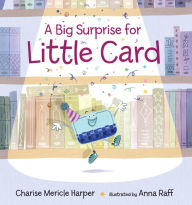
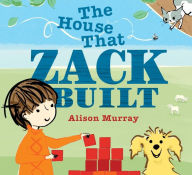
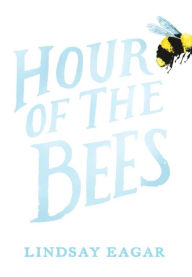
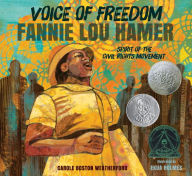

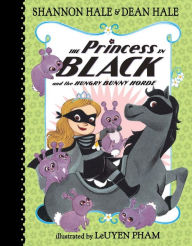
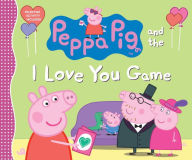







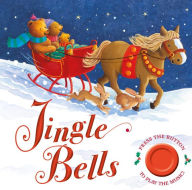










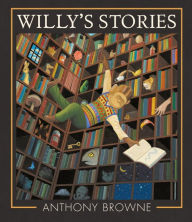

Interesting that you found this didn’t “need” to be historical. I agree. Not sure you can really set a novel in 1975 and not mention the Bicentennial it all. It was ubiquitous. Readers today might not understand the interest in baton twirling, but it was rather important in the 1970’s for reasons I still don’t get. I had not one but two batons! Agree completely with your assessment.
I actually don’t think that I would call this historical fiction. The time period doesn’t play a significant role in the novel itself, which is a critical component to historical fiction. This, to me, is realistic fiction that’s just set in the 1970s.
Almost done with it, and I’m bracing for a box of tissues.
I hadn’t considered before that maybe it was the nature of the talent contest that required the historical setting. That’s a good argument.
I heard this interview with Kate on the radio, and thought it might be of interest to this discussion: http://www.mprnews.org/story/2016/04/08/books-kate-dicamillo-raymie-nightingale
Finished it.
Oh, my heart. My aching, aching heart. I’m so glad I anticipated those tissues.
And I agree with most all of your review except your ding against the soul parts. I felt like this was intentional symbolism that has meaning to children. Sure, it may sound a bit tired to us adults, but, reading it with tween eyes, it felt perfect. The whole book felt perfect. I expect a medal at the end of the year.